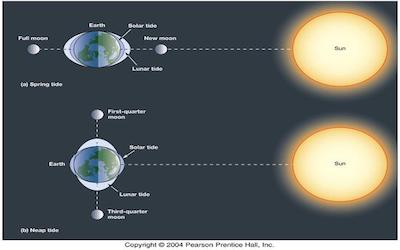PTE考生目前最大的问题之一就是练习题缺乏。除了有限的基本官方书(PLUS,Testbuilder, OG)之外
就没有题了。很多英语基础不是很扎实的同学很难找到练习材料。悉尼文波雅思PTE培训学校专门为澳洲,尤其是悉尼、墨尔本的PTE考生准备了适合PTE听力阅读练习的科学60秒。各位PTE同学可以练习PTE听力中的summarise spoken text和PTE口语中的retell lecture,PTE听力口语-科学60秒-Frosty Moss练习记笔记技巧和复述。废话少说,下面开始:
听力内容:
60秒科学节目(SSS)是科学美国人网站的一套广播栏目,英文名称:Scientific American – 60 Second Science,节目内容以科学报道为主,节目仅一分钟的时间,主要对当今的科学技术新发展作以简明、通俗的介绍,对于科学的发展如何影响人们的生活环境、健康状况及科学技术,提供了大量简明易懂的阐释。
This is Scientific American — 60-Second Science. I’mJulia Rosen.
Got a minute?
Every two weeks, on the full and new moons, thesun, moon and Earth fall along a nearly straight line. The combination of gravitational forces in thisarrangement creates large swings in the tides. Butthe celestial alignment affects more than the oceans—it also tugs on Earth’s crust, adding tothe stress on faults. This makes it more likely that major earthquakes will strike at thesetimes, according to a new study.
The idea isn’t new, but scientists have had a hard time testing the earthquake–tiderelationship. For instance, three of the largest earthquakes in recent years happened whentidal stress was high. But those big ones are rare and the link seems to break down forsmaller events.
So the researchers crunched a bunch of numbers: by looking at more than 10,000 mediumand large earthquakes, they found that the proportion of large events increased when tidalstress was high.
The results do not imply that every full or new moon will bring an earthquake—obviously. What the findings mean is that high tidal stress during new or full moons may up the chancesthat an earthquake will grow bigger than it otherwise might have been.
“Even magnitude 9 earthquakes start like magnitudes 1 or 2.” Satoshi Ide, the University ofTokyo seismologist who led the study. “So, at the initial stage, it’s very difficult to distinguishsmall or large earthquakes. It starts similarly, but it grows at some probability to large scale. That probability is controlled by some other effect.”
And one of those effects might be the tides. Ide points out that tides in the Earth’s crust areknown to cause tiny tremors along deep faults. “Earthquake faults are locked everywhere, butthat kind of slow deformation unlocks very small part of the fault…so it doesn’t make largefailure there, but once earthquake rupture starts…it can propagate very far and become verylarge earthquake.”
The study was published in the journal Nature Geoscience.
Ide is now doing a similar analysis on earthquakes that all happened in the same geologicsetting, like subduction zones. Perhaps that research will confirm whether heavenly bodies cantake smaller shakes and supersize them.
Thanks for listening for Scientific American — 60-Second Science Science. I’m Julia Rosen.
墨尔本悉尼文波PTE原创首发
更多精彩请持续关注微信文波_tv2。





